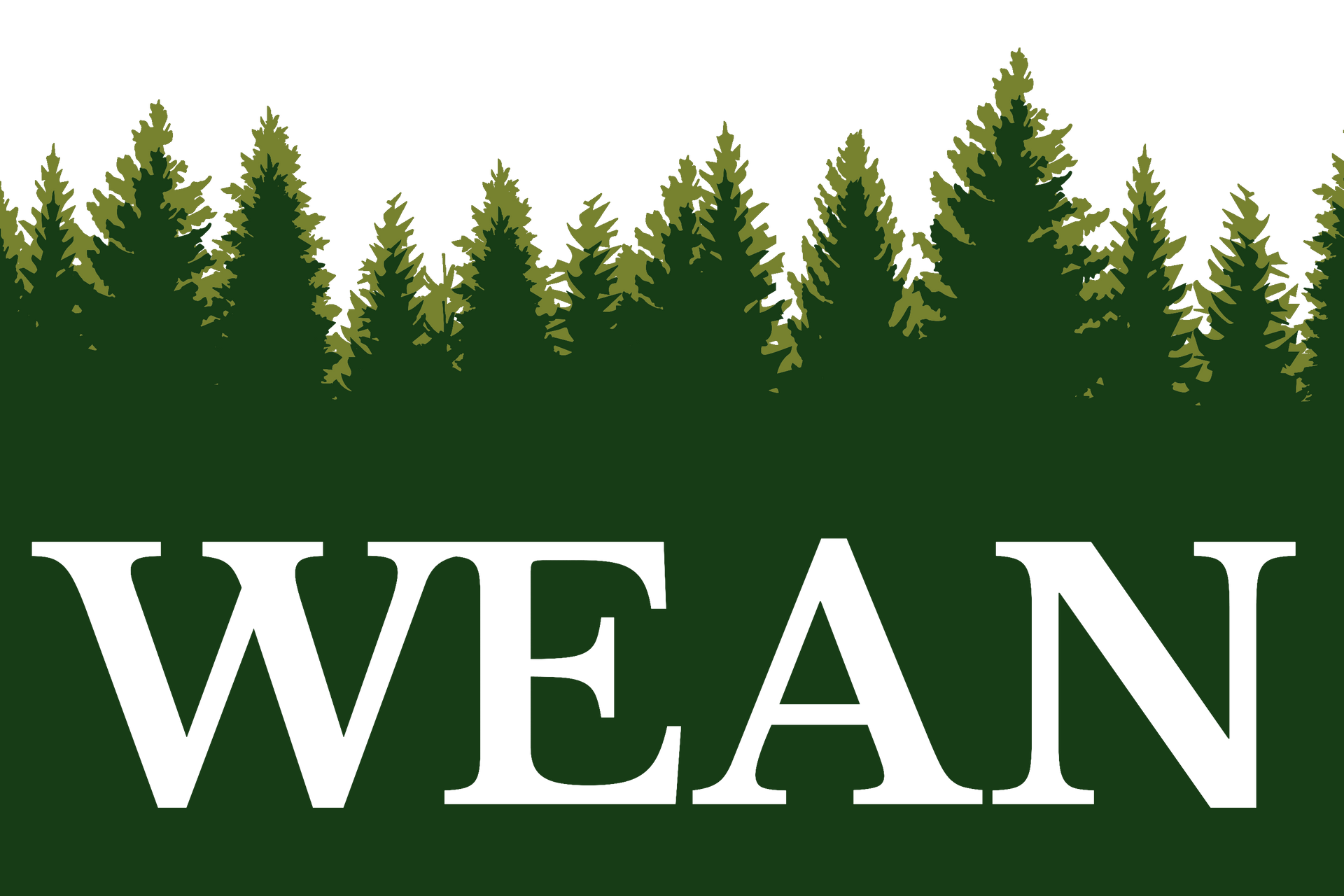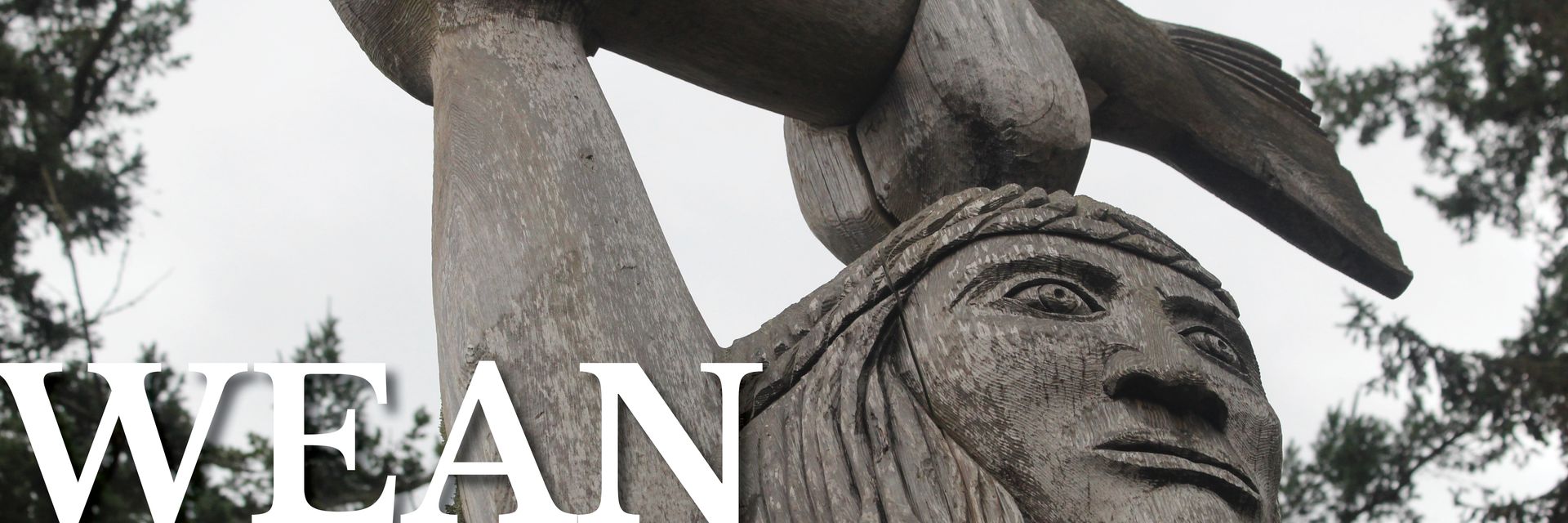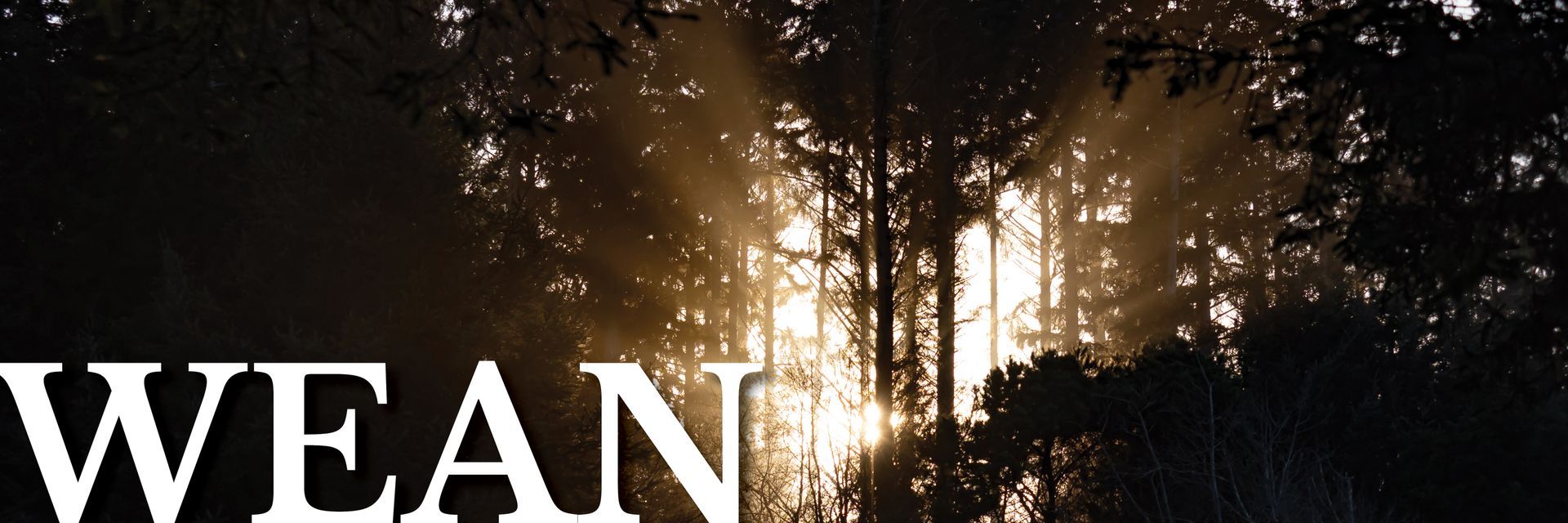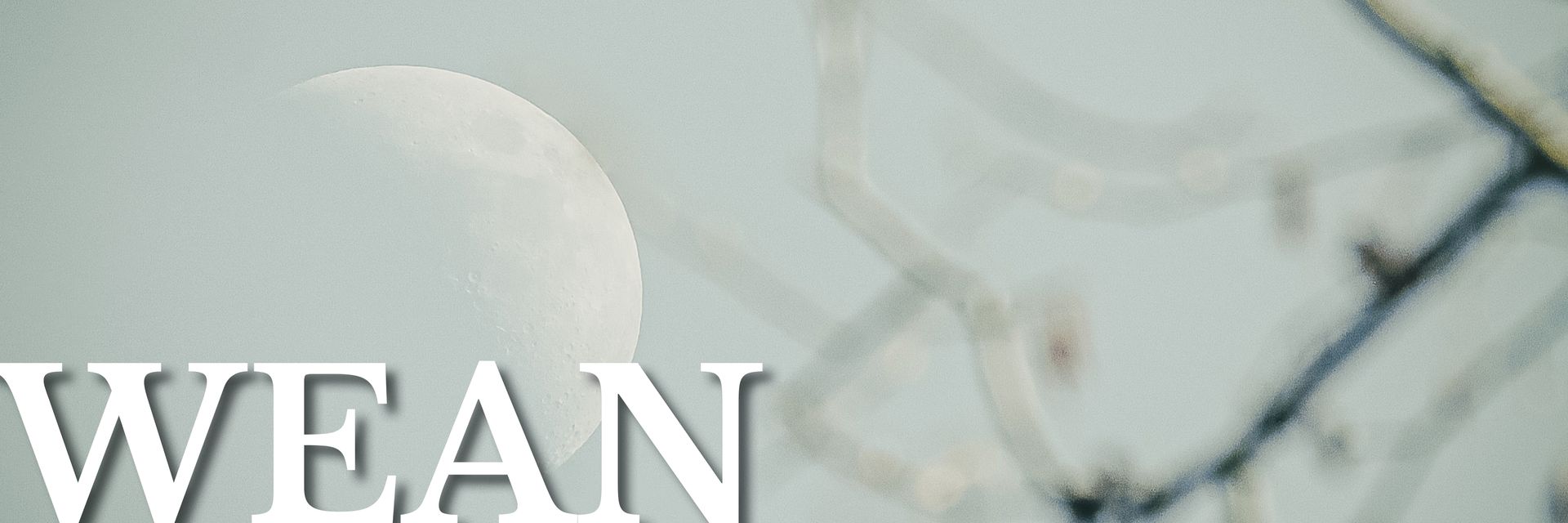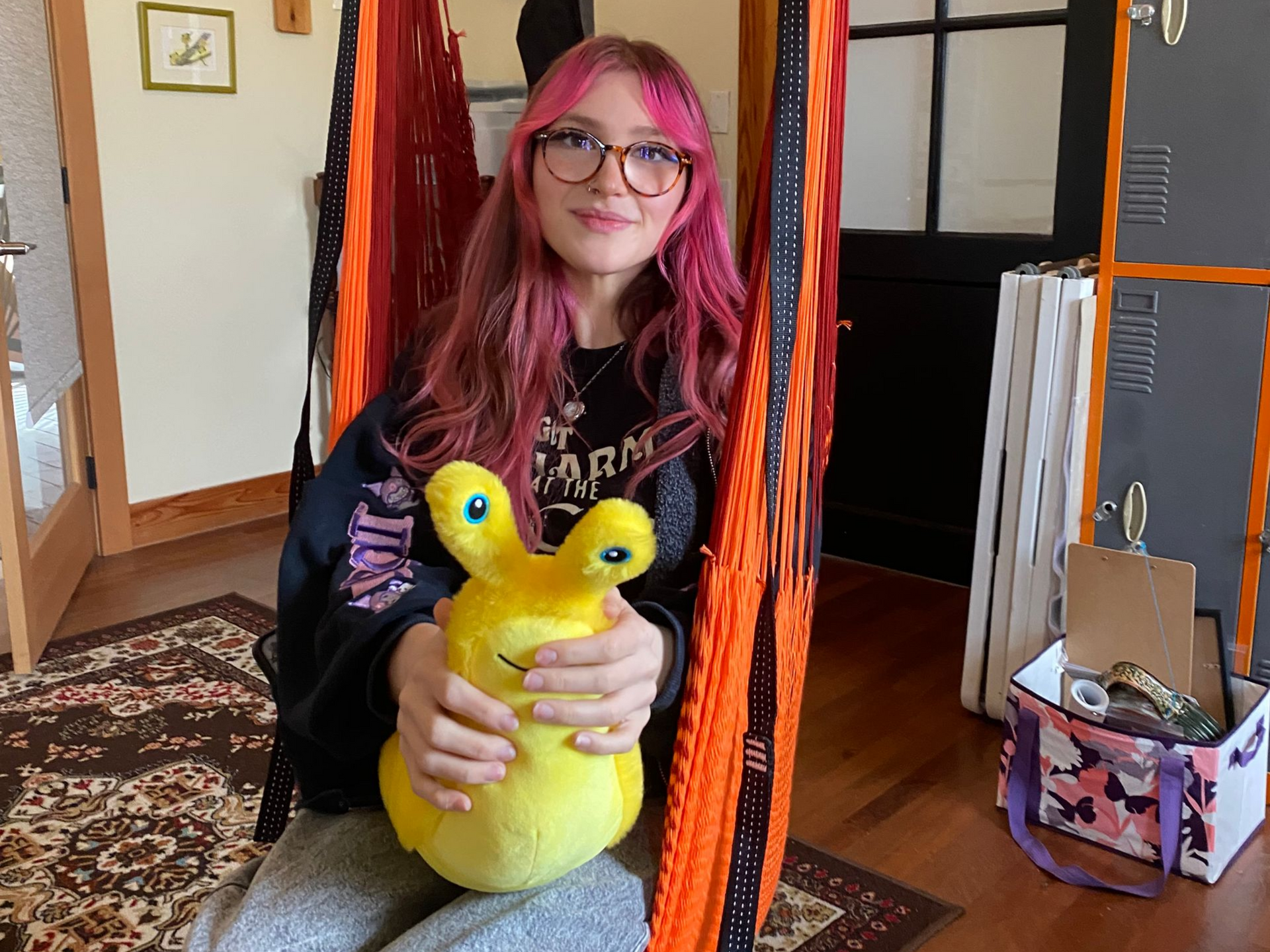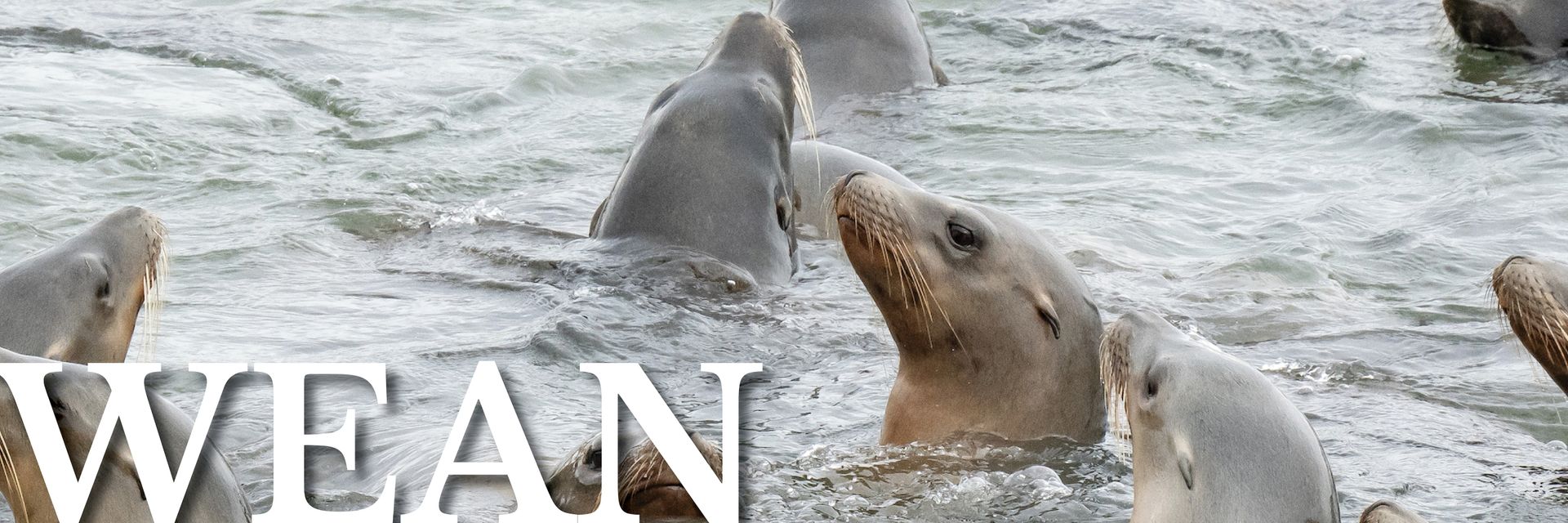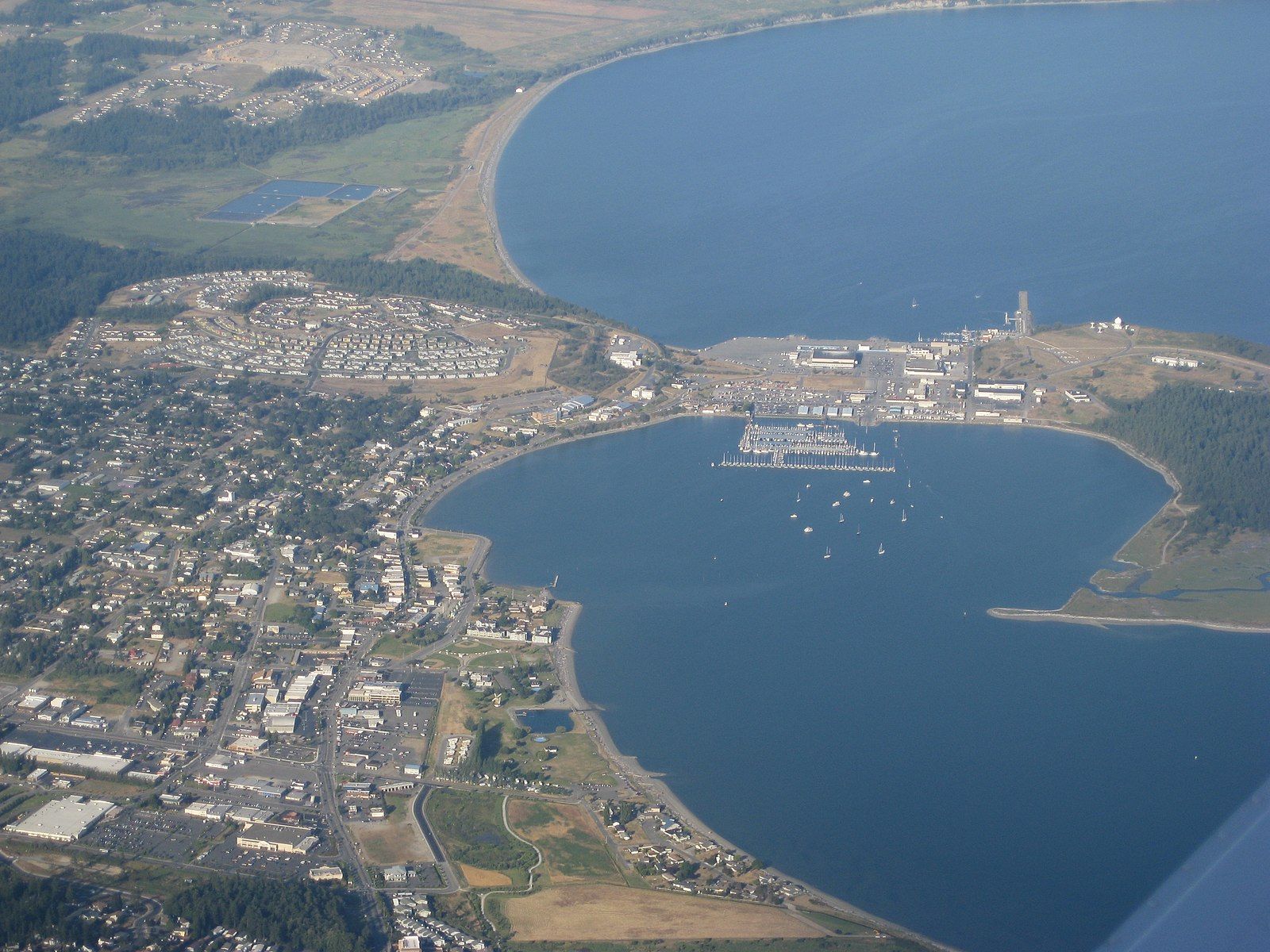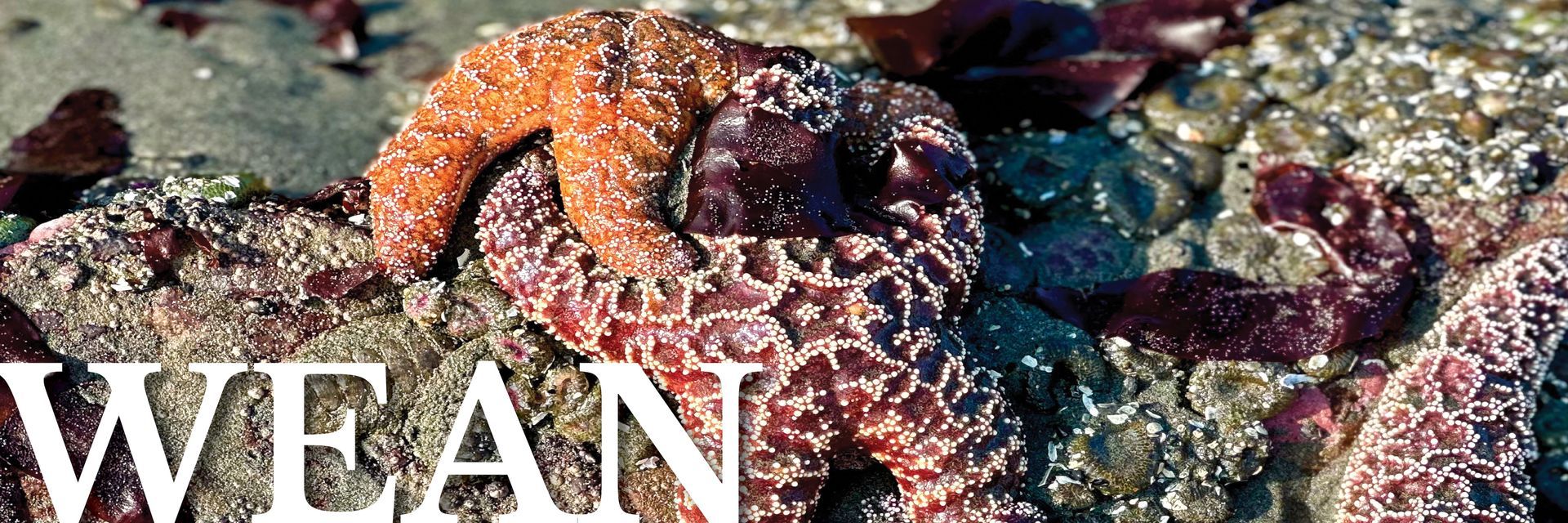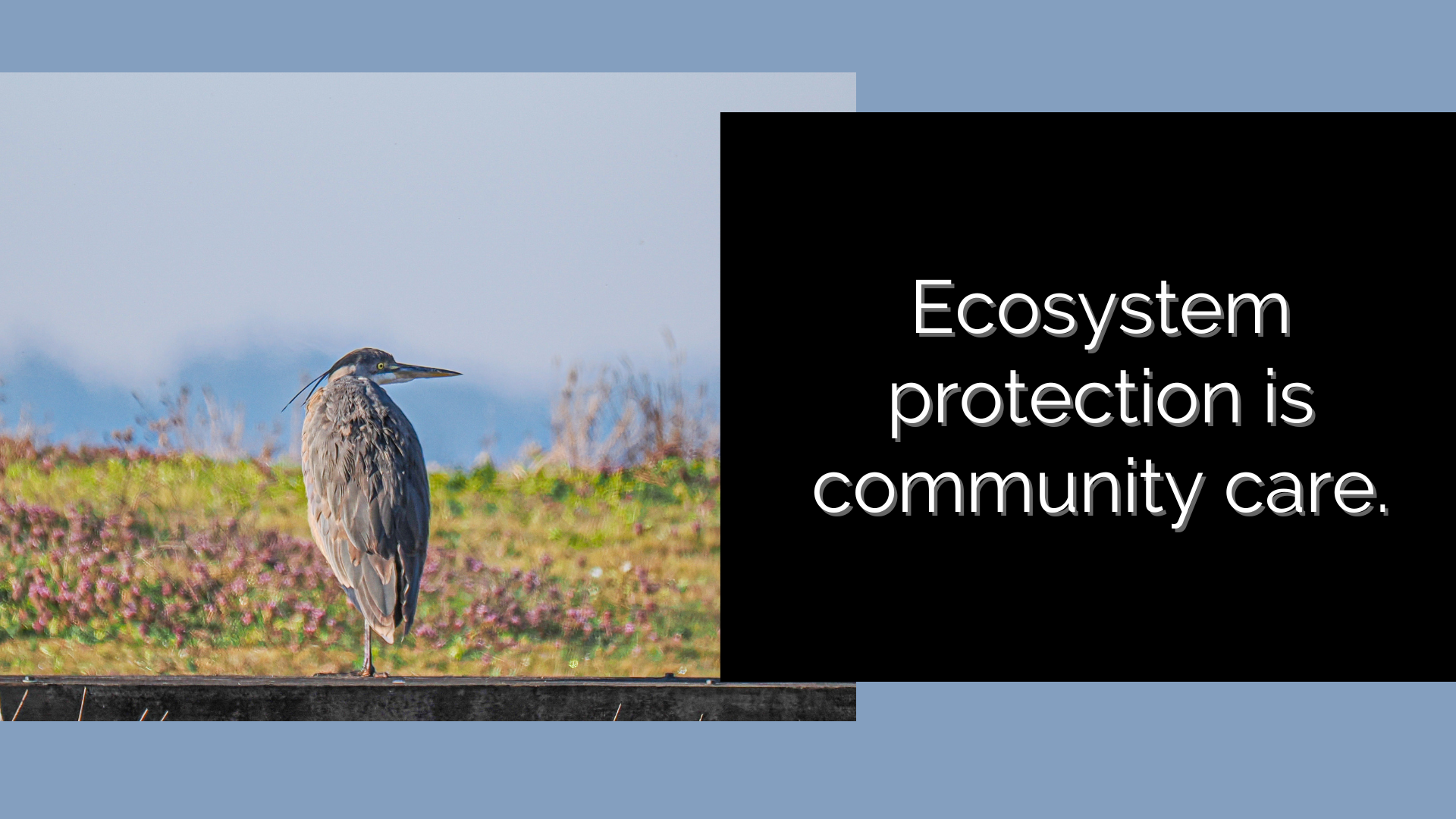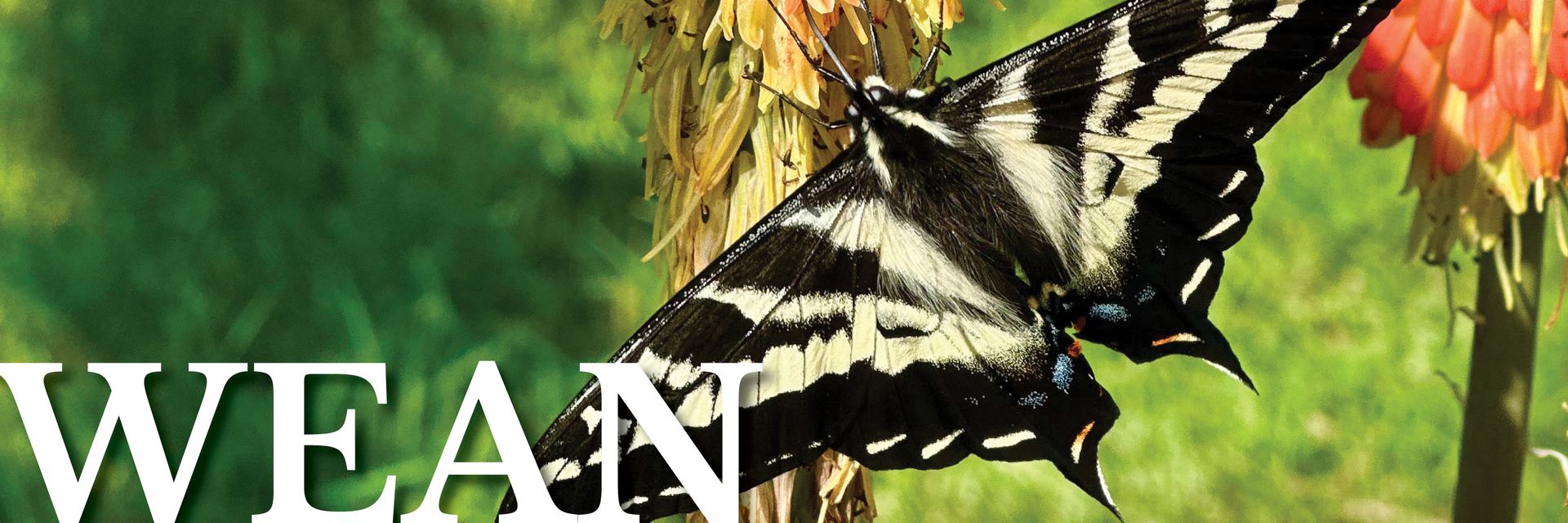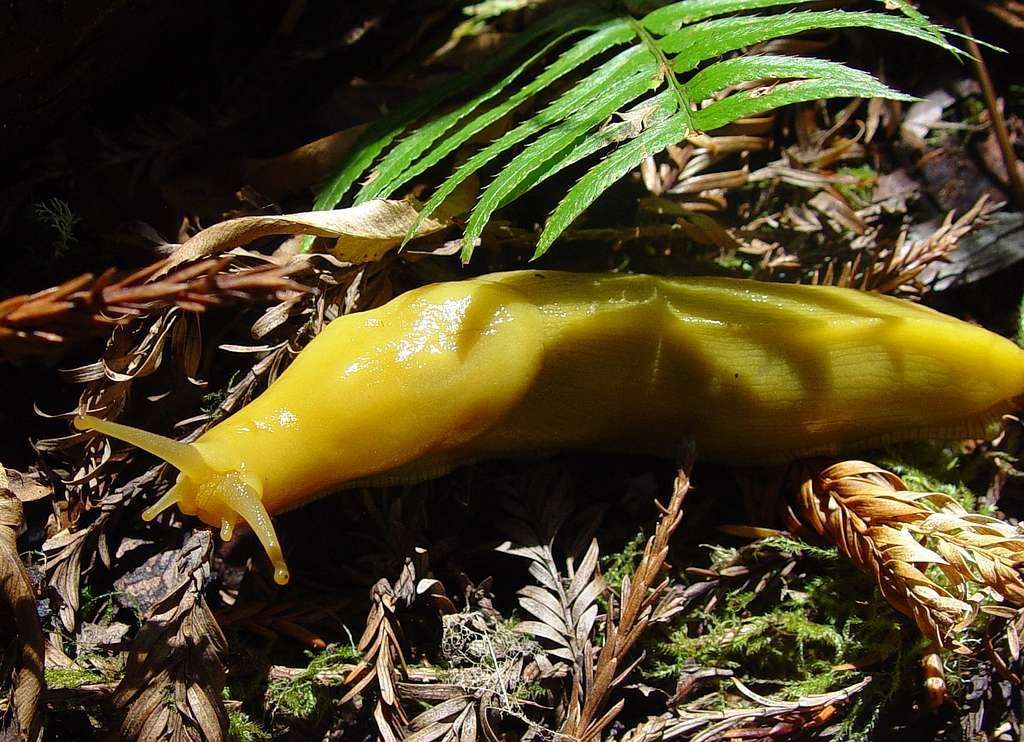All About Kelp
Q&A With Northwest Straits Commission
Kelp Program Manager Jeff Whitty

"In a way kelp can talk, we just need to learn how to listen. Like plants and terrestrial forests, kelp and kelp forests can exhibit changes in their size, density, color, and condition in response to changes in their environment. It is up to us to understand how these changes are linked."
— Jeff Whitty, Kelp Program Manager, Northwest Straits Commission
Aquatic ecologist and Kelp Program Manager Jeff Whitty answers WEAN Engagement Director Amanda Bullis's questions about monitoring kelp in the Puget Sound Region with the Northwest Straits Commission and the importance of kelp conservation and recovery efforts statewide.
Bullis: Why is it important to study and monitor kelp?
Whitty: Kelp forests are an important provider of life in Puget Sound.
Kelp forests are the marine counterpart to terrestrial forests, made up of many different species of tall, floating ‘canopy’ kelp and shorter, submerged ‘understory’ kelp, which provide many important services to life in Puget Sound. For example, kelp forests act as important habitat (feeding grounds, nursery areas, sanctuaries) for an array of wildlife, many of which we and our economy depend upon, like salmon and rockfish. Kelp is also a key component in the Puget Sound food web and is of great importance to the lifeways of many Northwest Tribes.
Research into areas such as kelp ecosystem value, stressors, restoration and distribution, and trends are needed to fully understand the value of kelp, what is happening with kelp, and what can be done to ensure the survival of kelp forests and their services.
Monitoring kelp forests helps us to better understand the distribution and trends of kelp (where kelp is found and how it is changing) and has shown beds to be highly variable across time and location. Monitoring kelp also helps us to determine the stressors, such as temperature, sedimentation, herbivores, that influence these changes and can provide insight into the effectiveness of kelp restoration and protective management practices.
Bullis: How did you get into studying kelp?
Whitty: I have worked with species that depend on marine vegetation, like rockfish, for years. I started directly working with kelp when I joined Northwest Straits Commission, where I coordinate the Northwest Straits Initiative Kelp Monitoring Program as well as the Puget Sound Kelp Conservation and Recovery Plan. In this position I work closely with many kelp researchers, community groups, and policy makers on the Kelp Plan to advance kelp conservation and recovery in Puget Sound.
Bullis: What is the Northwest Straits Initiative Kelp monitoring program? Why did this program start?
Whitty: The Northwest Straits Initiative Floating Kelp Monitoring Program is a community science-based effort led by Marine Resources Committees (MRCs) which monitor the extent and trends of select floating kelp beds (i.e., bull kelp and giant kelp) within Northwest Washington. The MRCs began monitoring kelp in 2015 to answer a question from an Island County Marine Resources Committee member: "What is happening with bull kelp in our local waters?”
The program’s main purpose is to collect data that MRCs can use to better understand their local kelp forests and inform their local government and communities about this critical habitat. However, the data is also made available for public use on Sound IQ, and is used by partners like Washington Department of Natural Resources who integrate it with other efforts in the Washington State Floating Kelp Indicator to monitor trends of select floating kelp beds throughout Washington.
Together the program consists of 50 plus volunteers that annually monitor floating kelp beds at sites in six counties one to four times in June through September, the primary period when floating kelp is at the surface.
Bullis: How many kelp sites does the program monitor? Where?
Whitty: Collectively, the
Marine Resources Committees monitor kelp beds at over 20 sites each year. Individually, each MRC monitors one to five sites. The monitored sites extend throughout the Northwest Straits region located as far south as Edmonds in Snohomish County, as far north as Pt. Whitehorn in Whatcom County, and as far west as Clallam Bay in Clallam County.
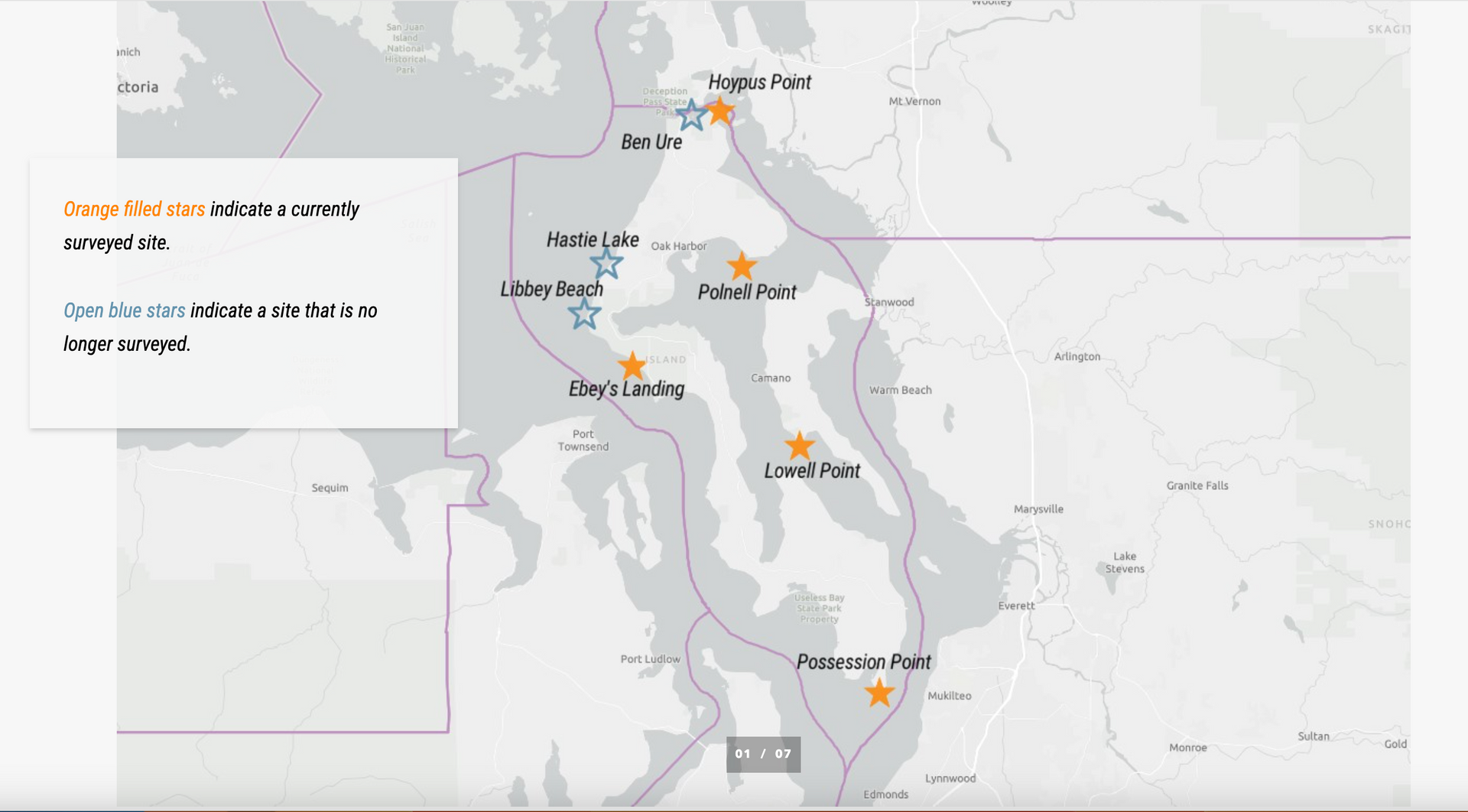
Bullis: How many monitoring sites are located in Island County?
Island County monitored five sites last year. These sites are well spread out across Island County and cover an array of environmental conditions, which is important as it helps us to understand how varying environmental factors can influence kelp beds.
Bullis: What is a Marine Resources Committee? What is the role of the MRCs in the kelp monitoring program?
Whitty: There are seven Marine Resources Committees within the Northwest Straits Initiative. The MRCs are county based advisory groups comprised of volunteers with an interest in protecting their local marine waters. MRCs receive base funding through grant agreements with the Northwest Straits Commission to accomplish priority restoration and protection work in their local areas. The Northwest Straits Commission receives Climate Commitment Act funding for partner work with the kelp program and funds from the EPA through the Puget Sound Partnership for kelp monitoring and administration.
The Northwest Straits Commission, Northwest Straits Foundation, and six MRCs participate in the Northwest Straits Initiative Floating Kelp Monitoring Program. The MRCs lead their own kelp monitoring projects. Each MRC decides if they will take on the monitoring, where, and with whom. The MRCs select site leads that manage and conduct each survey with a team of local volunteers. Northwest Straits Commission coordinates the program, providing the protocol, training, and support to MRCs as needed. Northwest Straits Commission also processes and analyzes the collected data. Northwest Straits Foundation provides support through insurance and guidance on program safety.
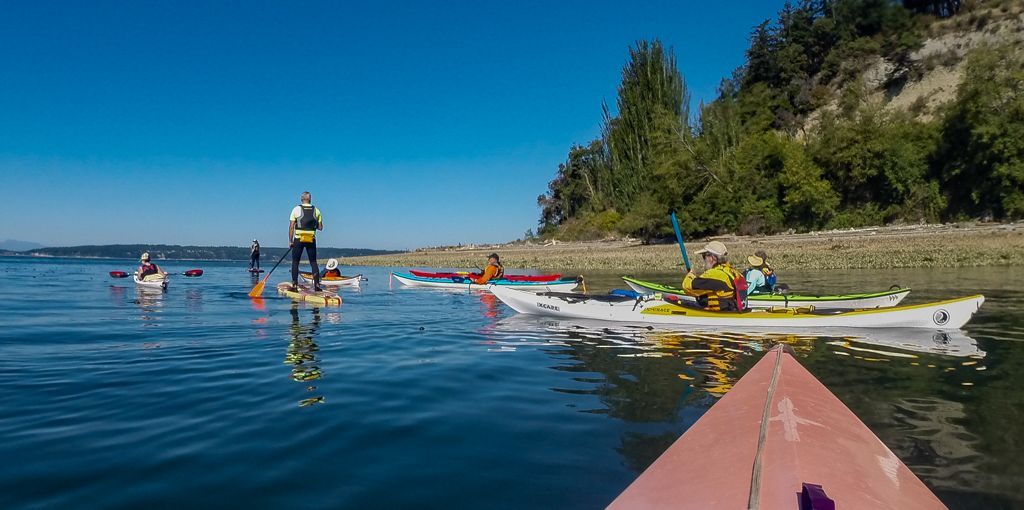
Bullis: What is the program’s kelp monitoring protocol?
Whitty: A protocol was developed for the Northwest Straits Initiative Kelp Kayak Monitoring Program in 2014 by Emily Bishop, a NOAA Hollings Scholar, to provide a standardized method to safely conduct kelp kayak surveys. Each Marine Resources Committee follows the protocol to ensure that their data is collected using the same methods as other MRCs. This protocol is also used by other Puget Sound organizations which allows for comparisons between groups.
The protocol is for kayakers to visit the same stretch of shoreline for each survey under optimal conditions for viewing floating kelp — low tide, slack current, limited wind — and create a perimeter of all kelp beds in the survey area using their GPS and kayak. Kayakers also record water temperature, depth, and general observations of the bed and wildlife at points along the bed perimeter. Once a survey is completed, the kayakers submit the data to Northwest Straits Commission for processing.
After processing, Northwest Straist Commission uploads the bed perimeters and reported data to Sound IQ for MRCs and the public to view and use.
Bullis: What trends are you seeing during kelp monitoring?
Whitty: The extent of floating kelp beds can change year to year and site to site. This can occur naturally or be influenced by human or climate induced factors. In the nine to ten years the MRCs have been monitoring floating kelp beds, we have seen most of these beds fluctuate between years but have no general trend overall. Unfortunately, a few of the monitored beds have been observed to decrease or disappear. Snohomish MRC began monitoring floating kelp beds in Meadowdale and Mukilteo in 2015 and documented their disappearance in 2018 and 2019, respectively. Conversely, four of the monitored beds located in Skagit and Island counties have shown an increase in bed size over the monitored period.
Further information on these trends can be viewed on the program’s StoryMap.
It is also important to understand more long term trends of kelp beds, but this is not always possible due to a paucity of data that cover extended periods of time. Washington Department of Natural Resource’s Washington State Floating Kelp Indicator has used long term aerial monitoring collected since 1989 and historical information, including Traditional Ecological Knowledge from partners including Samish Indian Nation, to demonstrate the decline and disappearance of kelp beds in Central and South Puget Sound and generally relatively stable kelp beds on the coast or Straits of Juan de Fuca. Long term trends in the North Puget Sound are less clear due to limited historical information, although Traditional Ecological Knowledge suggests a cause for concern in some areas.
Further information on these trends can be viewed on the project’s interactive map.
Bullis: What is the Kelp Plan? Why is it important?
Whitty: Kelp forests are a vital component to the Puget Sound ecosystem. However, floating kelp is declining or has disappeared in regions including Central and South Puget Sound and we are uncertain of trends in understory kelp due to limited knowledge. There is a critical and immediate need to better understand and protect these forests and the services they provide.
The Puget Sound Kelp Conservation and Recovery Plan provides a research and policy framework consisting of goals and actions aimed at protecting and recovering Puget Sound kelp species and the ecosystem services they provide. Published in 2020, the Kelp Plan has guided the development and funding of projects, served as a summary of the state of the knowledge, and inspired regional initiatives and conservation plans. The Kelp Plan’s call-to-action created a wave of momentum within the kelp community which resulted in advancements in support of the conservation and recovery of Puget Sound’s kelp forests.
The NWSI Floating Kelp Monitoring Program is one of many programs and projects that are helping to advance the Kelp Plan actions.
Bullis: Anything else you would like people to know about kelp or the monitoring program?
Whitty: Regarding kelp, kelp are not plants but are large brown algae. Kelp can be perennial or annual depending on the species. There are 17 species of kelp in Puget Sound (one of which is considered a floating canopy kelp) and 22 species in Washington (two of which are considered floating canopy kelp). Unfortunately, we know very little about the understory kelp hidden below the surface and we need to greatly expand our efforts to understand and protect these species as well.
While we have made many advances with the conservation and recovery of Puget Sound kelp over the last few years, we need all hands on deck to continue to support and expand these efforts to achieve the vision of the Kelp Plan: revitalized Puget Sound kelp forests stretching from Olympia to Vancouver, B.C. providing economic, recreational, and ecological benefits to all living things that call these shores and waters home.
We encourage anyone interested in learning more about or getting involved in the Kelp Plan, including those involved in related fields such as salmon, water quality, upland management, to please visit the Kelp Plan webpage or email me to learn more. You can also follow ‘The Under Story’, our social media campaign for kelp and the Kelp Plan, on Facebook, Instagram, or on the Kelp Plan webpage.
Regarding Northwest Straits Initiative Floating Kelp Monitoring Program, if you are interested in participating in one of the MRC kelp monitoring projects, please reach out to your local MRC.
Bullis: If kelp could talk, what do you think it might say to us?
Whitty: In a way kelp can talk, we just need to learn how to listen. Like plants and terrestrial forests, kelp and kelp forests can exhibit changes in their size, density, color, condition, etc. in response to changes in their environment. It is up to us to understand how these changes are linked. We have amazing researchers working on this, but they will need continued and expanded support, funding, and capacity to speak kelp fluently.
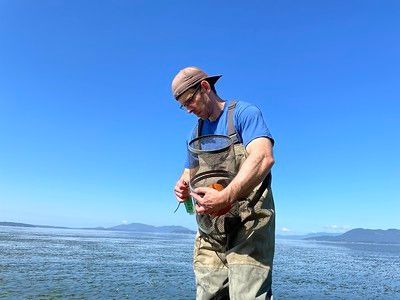
Jeff Whitty is an aquatic ecologist and the Kelp Program Manager for Northwest Straits Commission. Jeff coordinates the Northwest Straits Initiative Floating Kelp Monitoring Program and the Puget Sound Kelp Conservation and Recovery Plan (Kelp Plan). In these roles Jeff works closely with volunteers, agencies, community groups, non-profits, tribes, and universities to monitor, conserve, and recover Puget Sound kelp forests and their services. Jeff earned his master’s degree in marine science from Murdoch University, Western Australia and his undergrad degree in biology from the University of San Diego. Email Jeff at whitty@nwstraits.org.
The Northwest Straits Commission provides funding, training and support to seven county-based Marine Resources Committees (MRCs). It facilitates regional coordination among the MRCs and connects the MRC work to regional planning processes such as the Puget Sound Partnership Action Agenda and Puget Sound Nearshore Estuary Restoration Program. The Northwest Straits Commission also takes on and manages regional projects that are of interest to all MRCs such as training volunteers to identify forage fish spawning sites.
Want to learn more?
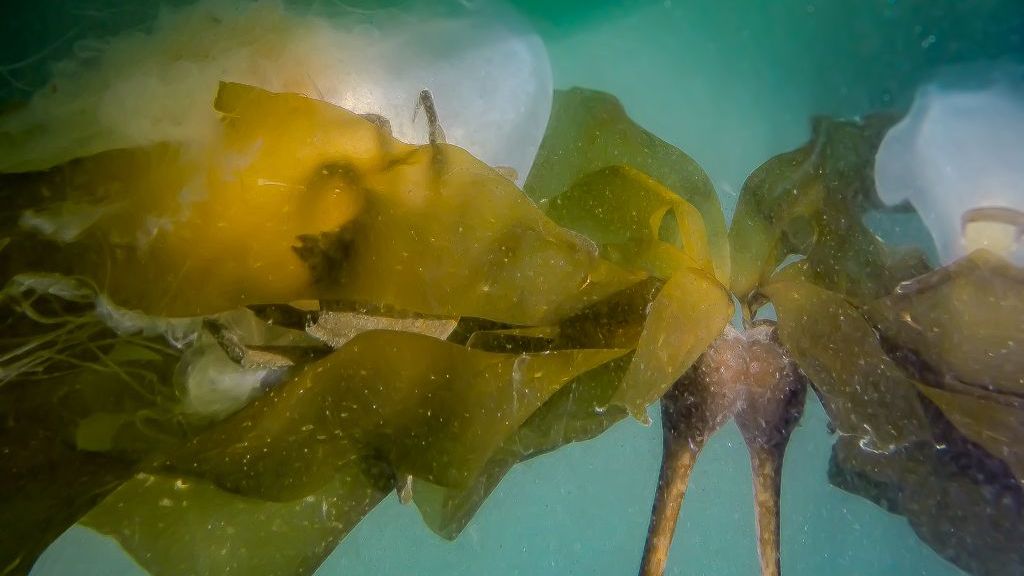
Follow Northwest Straits On Social Media
Facebook: @northweststraitsinitiative | Instagram: @nwstraits | LinkedIn: @nwstraits | Vimeo: Northwest Straits
Watch 'The Under Story' On Vimeo
"The Under Story," is a social media series all about kelp! Join the Northwest Straits Commission on this exciting journey as we explore kelp, its vital role in our ecosystem, and efforts to protect Puget Sound kelp forests.
Learn About Bull Kelp Monitoring In Island County From Citizen Scientist Linda Rhodes
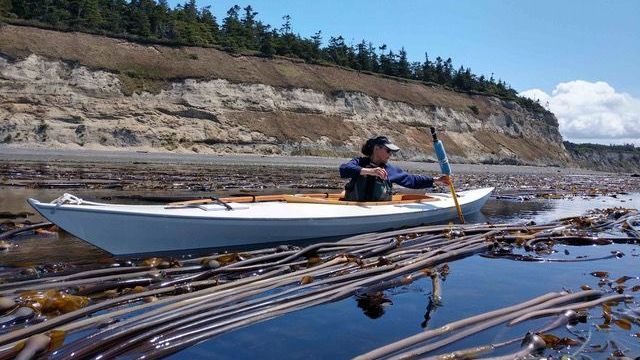
On the Action Hour podcast, Amanda chats with Linda Rhodes about what she has learned as a citizen scientist monitoring bull kelp in the nearshore marine environment off the coast of Whidbey and Camano Islands with the Island County Marine Resources Committee.
Listen on Spotify, Apple Music, iHeart Radio, and the WEAN website.
Get Involved With Your MRC
There are seven Marine Resources Committees in the Puget Sound region:
- Clallam County Marine Resource Committee
- Jefferson County Marine Resources Committee
- Island County Marine Resources Committee
- San Juan County Marine Resources Committee
- Snohomish County Marine Resources Committee
- Skagit County Marine Resources Committee
- Whatcom County Marine Resources Committee
To learn more about the Island County Marine Resources Committee and ways to get involved, email Island County MRC coordinator Kelly Zupich at
k.zupich@islandcountywa.gov.
The Island County MRC generally recruits citizen scientists that have gone through the Sound Water Stewards training program for projects.
More Resources
- Visit the Kelp Plan website to learn more about the larger policy frame work for kelp conservation and recovery statewide.
- Check out the Northwest Straits Initiative Floating Kelp Monitoring StoryMap to see interactive data from each of the six participating Marine Resources Committees.
- Take a dive into the data collected across the sound in the SoundIQ database.
- Learn about the disappearance of kelp on the San Juan Islands through the Samish Indian Nation StoryMap,
"A Decade of Disappearance: Bull Kelp in the San Juan Islands".
